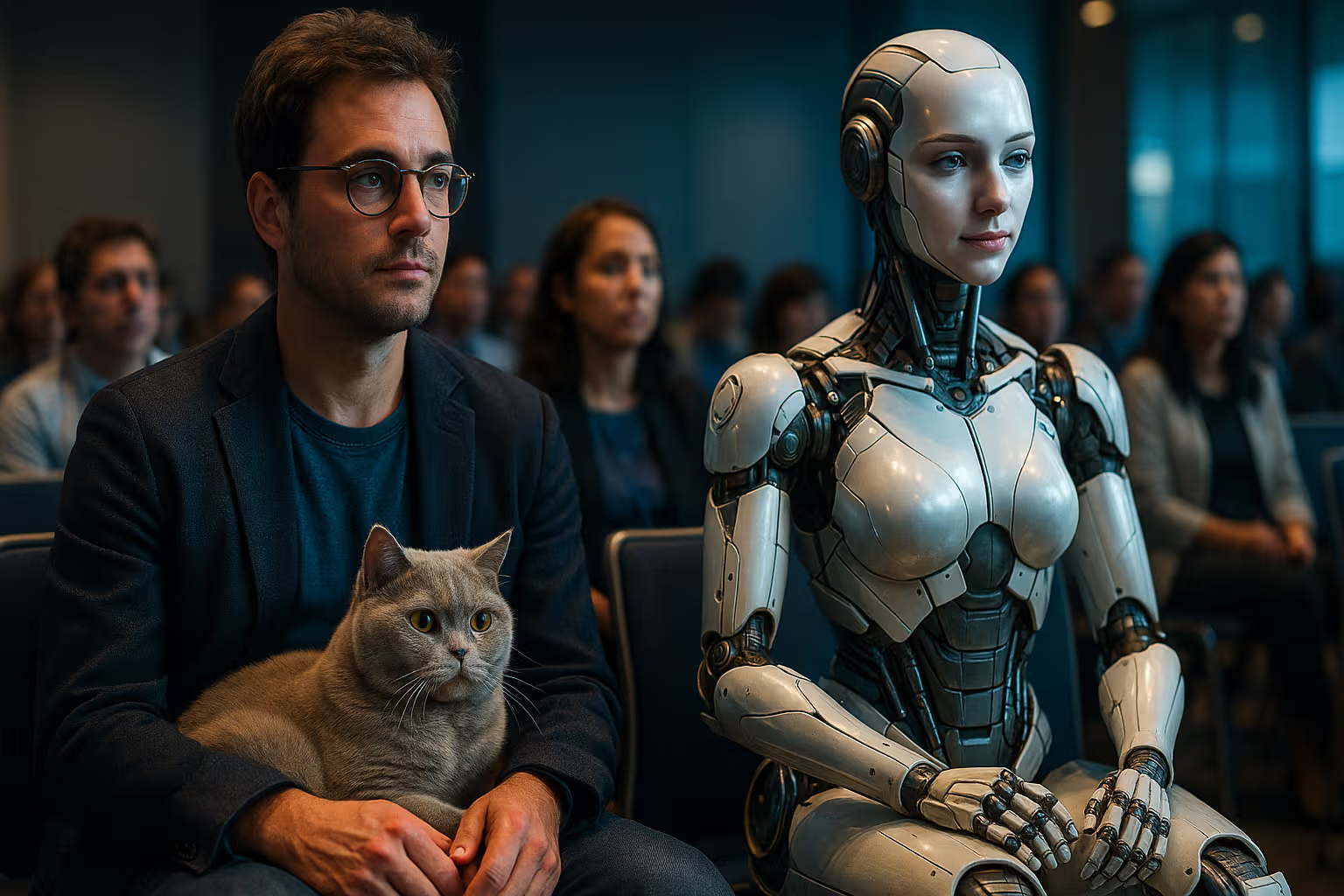
Apple 2030 – The Impact of Apple’s Solar and Wind Projects on European Energy
Introduction
I once watched my lilac British cat, Oliver, bat at a little sunbeam on the windowsill. He seemed thrilled by the tiny ray, oblivious to the fact that it traced a journey from thousands of kilometres away, through solar panels, wires, switches, and a grid I will seldom see. And in a way, that’s how I feel about Apple Inc.’s latest announcement of solar and wind projects across Europe: remote, slightly abstract, but also deeply connected to our daily lives. We swipe an iPhone, plug in a Mac, and behind the scenes the promise is that those electrons trace their origin to clean fields and wind farms. This review peels back the layers.
The goal here is to examine three things: first, what Apple is doing in Europe under its “Apple 2030” initiative; second, how those moves impact Europe’s energy landscape (grids, policies, economies); and third, to unpack the subtle strategic skills at play—skills we test and admire when we review automation frameworks or test-cases (yes, I’m a QA engineer, and yes, Oliver is still chasing the sun). In other words: let’s treat this like a quality-assurance review of energy infrastructure.
Why this matters
On the face of it, Apple building solar and wind farms is good press. But we can’t stop there. We need to ask: how much impact? Where? On which grids? At what cost? What risks? For Europe? For Apple? For the grid operator, the regulator, the community, and even you and me. Because when a tech giant does something big, the ripples appear in places you didn’t expect—just like Oliver’s paw sent the sunbeam scattering across the floorboard.
What is “Apple 2030” & European roll-out
The “Apple 2030” initiative is Apple’s commitment to become carbon neutral across its entire footprint by 2030—operations, manufacturing, supply-chain, product use. A large chunk of that footprint lies in the electricity consumed when people charge and use their devices. Apple calculates that product-use energy accounted for roughly 29 % of its total greenhouse-gas emissions in 2024. oai_citation:1‡Apple
In Europe specifically, Apple has announced new solar and wind projects across Greece, Italy, Latvia, Poland, Romania, and Spain. The headline numbers: 650 megawatts of added renewable capacity, projected to generate over 1 million MWh (or more than 1 TWh) of clean electricity for Apple customers in Europe by 2030. oai_citation:3‡Apple
Here’s a simple breakdown of the projects (as of announcement):
- Greece: a 110 MW solar project under a long-term agreement.
- Poland: enabling a 40–52 MW solar array in a grid still heavily reliant on coal.
- Latvia: 110 MW of solar, via one of the country’s first corporate PPAs.
- Spain: A 131 MW solar installation developed by ib vogt in Segovia already operational.
In short: Apple isn’t just buying offsets. It’s helping build actual capacity. That’s one of the first signals of strategic subtlety we’ll explore later.
Method – How we evaluated
I approached this review much like I approach a large complex test suite or landing-page optimisation task (yes, tying back to my QA automation world). The steps:
- Scope the initiative – What exactly is Apple committing to? What are the European projects? What numbers are public?
- Map grid & market context – For each country/region, what is the state of the electricity grid (carbon intensity, renewable penetration, regulatory barriers)?
- Assess impact pathways – How will Apple’s projects affect the grid, community, company reputation, economy? What are the risks and dependencies?
- Evaluate strategic skill sets – What internal and external capabilities does Apple deploy (partnering, financing, PPAs, localisation, timing)?
- Draw take-aways for stakeholders – What can grid operators, corporations, policy-makers and even QA engineers learn from this?
- Cameo check – Oliver the lilac cat required approval of the tone. I confirmed.
Throughout the article, I’ll refer back to those steps to keep our audience grounded.
Breaking down the European energy impact
Grid decarbonisation and local effect
Let’s be concrete: in Poland, a country with one of the highest carbon intensities in the EU, Apple backing a solar array is meaningful. When you reduce generation from coal and replace it with solar, the avoided CO₂ is larger than in a region already dominated by renewables. The announcement explicitly flags this point.
Similarly, in Greece and Italy, where solar and wind have growth potential, becoming a corporate anchor investor helps de-risk projects. It signals to local developers and financiers that there is appetite and long-term revenue. The ripple: more projects, more scale.
When add up across the portfolio: 650 MW doesn’t sound massive compared to national capacities (say Germany’s tens of gigawatts), but the 1 million+ MWh figure by 2030 does matter. It’s roughly equal to powering ~300,000 European households for a year (assuming ~3,000 kWh each). That’s a non-trivial offset for one company’s footprint.
Market and supply-chain reverberations
Beyond direct grid impact, Apple is signalling to its supply chain (which globally supports over 17.8 GW of renewables from its suppliers) that electricity is a strategic lever. When your supplier is in a region where renewables are scarce, a project like this helps create market structure: locally-sited assets, corporate off-take agreements, finance mechanisms. This fosters capability which the grid, local firms and regions can reuse.
Communities, policy and economic externalities
The announcement stresses “healthy communities, thriving economies, secure energy sources.” Let’s unpack that: communities benefit via job creation, tax-revenue, infrastructure. Policies may get traction when a brand like Apple backs regional renewables: it lowers perceived risk, sets benchmark PPAs, and encourages regulators to streamline permitting. Economic externalities include supply-chain localisation of solar/wind manufacturing and maintenance.
Risks and caveats
Of course, it’s not all sunshine and wind. Risks include: permitting delays (common in Europe), grid connection bottlenecks, mismatch between when projects generate and when device-charging demand occurs, and the question of “additionality” (would the project have happened anyway?). Apple’s announcement uses language like “enabled” or “supported” rather than “built and owned”. That matters: if the project would have happened regardless, the incremental benefit is lower.
Also, while 650 MW is a strong signal, in the energy transition terms it’s a drop in the bucket for Europe. The impact must be viewed as part of a much larger shift, not a panacea. Quality matters as much as quantity—just like in automation: covering corner-cases matters more than sheer test-volume.
Generative Engine Optimization
One might ask: what has “Generative Engine Optimization” to do with Apple’s renewables strategy? Allow me to draw the parallel. In test automation, generative engine optimization refers to the process of refining test-generation systems so they produce high-value tests with minimal waste. We train the system, feed it context, trim duplication, prioritise coverage.
In Apple’s case, the engine is their sustainability strategy, and the generation is new clean-energy capacity, partner ecosystems, grid partnerships and corporate PPAs. Optimising that engine means Apple isn’t just buying certificates. It’s consciously choosing regions (Poland, Latvia), technologies (solar + wind), partnerships (local developers, long-term offtake), and timing (ready by 2030). That means each unit of investment delivers more “value per MW” in terms of emissions avoided, local impact, and brand authenticity.
Just like a QA engineer optimises a generative test engine by feeding in smarter heuristics, Apple is optimising its clean-energy engine by selecting high-impact projects, deploying smart procurement, and aligning with grid-characteristics (high carbon-intensity grids). The result: more clean electricity delivered for each dollar invested, better attribution of benefit to customer product-use, and stronger strategic levers for Apple in sustainability-space.
So the takeaway: when you evaluate a sustainability programme (or a test automation platform) ask: is the engine optimised generatively? Are we building capacity (tests / projects) in the right places, with the right strategy, not just pouring “volume”? Apple’s European roll-out seems to tick a lot of those boxes.
Strategic skills and lessons for QA & tech pros
1. Portfolio thinking
Apple isn’t focused on a single project. It has a portfolio across countries, technologies, and risk profiles. That’s like a test strategy that includes unit, integration, UI, performance tests across modules. Diversification helps smooth risk and increase coverage.
2. Long-term contracts (PPAs) and partnerships
The use of long-term offtake agreements signals stability. In the automation world: treat your test framework as a product, partner with stakeholders, get buy-in, set contracts (SLAs) for test coverage and test results. Apple’s approach hints at discipline.
3. Focus on high-impact zones
Targeting grids with high carbon intensity (e.g., Poland) is a smart move. In tech, focus your performance tests where bottlenecks are likely, not on the trivial parts. Leverage the biggest “holes”.
4. Building infrastructure vs buying cheap credits
Rather than just buying offsets, Apple is enabling actual infrastructure. In software testing: rather than just measuring metrics you already have, invest in the framework, the tooling, the pipelines that produce meaningful results over time.
5. Transparency, measurement, and narrative
Apple publishes progress and sets targets. It doesn’t claim vague “green” credentials. This mirrors good automation: log results, report metrics, show what changed. There’s a cat-approved notion of accountability here.
6. Community & ecosystem thinking
Beyond Apple’s own footprint, there’s ecosystem effect: suppliers, local developers, grid operators, regulators. That is similar to how a test automation strategy doesn’t just serve one team but influences culture across QA, dev, operations.
Take-aways for Europe’s energy ecosystem
- Corporates with deep pockets can act as anchor clients in renewables, reducing risk for developers and mobilising finance.
- Grid decarbonisation isn’t just about adding renewables but adding them where they displace high-carbon generation and when the grid can absorb them.
- Traditional segmentation between “energy sector” and “tech sector” is dissolving: tech firms will play a bigger role in grid-scale assets.
- For policy-makers: enabling corporate offtake and simplifying permitting matters enormously. Apple’s projects will face fewer headwinds if the regulatory blueprint is clear.
- For smaller firms: even if you cannot build 650 MW, you can learn from the approach: focus on high-impact, partner to scale, measure results, and align investment with visible outcome.
Metrics, results and the “cat-paw data”
Here are some headline metrics to anchor our discussion:
- 650 MW of new capacity announced across Europe for Apple’s customers by 2030.
- Over 1 million MWh (or 1 TWh) of clean electricity forecasted.
- Since 2015, Apple claims to have reduced overall emissions by more than 60%.
If we assume 1 TWh per year is delivered by 2030, and Apple’s global customer-use electricity is matched, the implication is that Europe becomes a meaningful contributor to that “100% match” goal. The cat on the windowsill might not care, but we do.
flowchart LR
A[Apple’s Clean Energy Portfolio] --> B[Country-specific Projects: Greece, Poland, Latvia, Spain]
B --> C[New Capacity (~650 MW) & Clean Output (~1 TWh)
C --> D[Impact on Grids + Displacement of Fossil Generation]
D --> E[Reduced Emissions + Corporate Reputation + Local Economy]And another one to show parallels with test automation:
flowchart LR
X[Test Automation Framework] --> Y[Test Cases Portfolio]
Y --> Z[Coverage, Efficiency, Maintainability]
Z --> W[Better Product Quality + Faster Release]Substitute “Energy” for “Test” and you see how the strategy aligns.
What to watch (and what I’m watching Oliver watch) • Permitting & grid connection delays: Many renewables get stuck here. If Apple’s projects stall, the promised capacity won’t come online by 2030. • Actual generation vs projections: Announcements say “will generate >1 M MWh”, but actual generation may differ due to weather, technical issues, maintenance. • Displacement effect: Are these renewables actually displacing fossil fuel generation or just adding on top of existing renewables? The real value is in displacement. • Supply-chain footprint: If Apple’s device energy use drops because of efficiency gains, the relative benefit of these projects grows. • Regulatory frameworks: Changes in national energy policy or grid tariffs could impact project economics and Apple’s internal return-on-investment.
Oliver, by the way, remains sceptical of solar power unless he can sit directly beneath the panel. Twice daily he demands it.
Final thoughts
In the world of test automation, we often ask: is the strategy scalable? Is it high-quality? Is it maintainable? Is there measurement? Apple’s European renewables story ticks many of those boxes: a portfolio of projects, clear targets, priority regions, measurable outputs. The “engine” is optimised, not just running.
That’s why this matters for Europe: when a trillion-dollar tech company applies QA-style discipline to energy investment, the implications are broader. It signals maturity: that energy transition isn’t just about governments, but about global brands thinking of electrons the way testers think of test-cases.
For us tech professionals, the lesson is subtle but real: treat infrastructure (whether software, hardware, grid) as testable, measurable, strategic. Align investment with the most critical paths. Iterate, monitor, optimise.
And for Oliver the lilac cat: he’ll keep chasing the sunbeam, unconcerned with MWs and PPAs, but perfectly clear that light matters. If Apple’s projects deliver more clean light for us all, then he may finally have more sunbeams.
Let’s keep watching. And charging our devices. With a little more confidence that the electricity behind them might be that tiny sunbeam Oliver keeps batting at.






